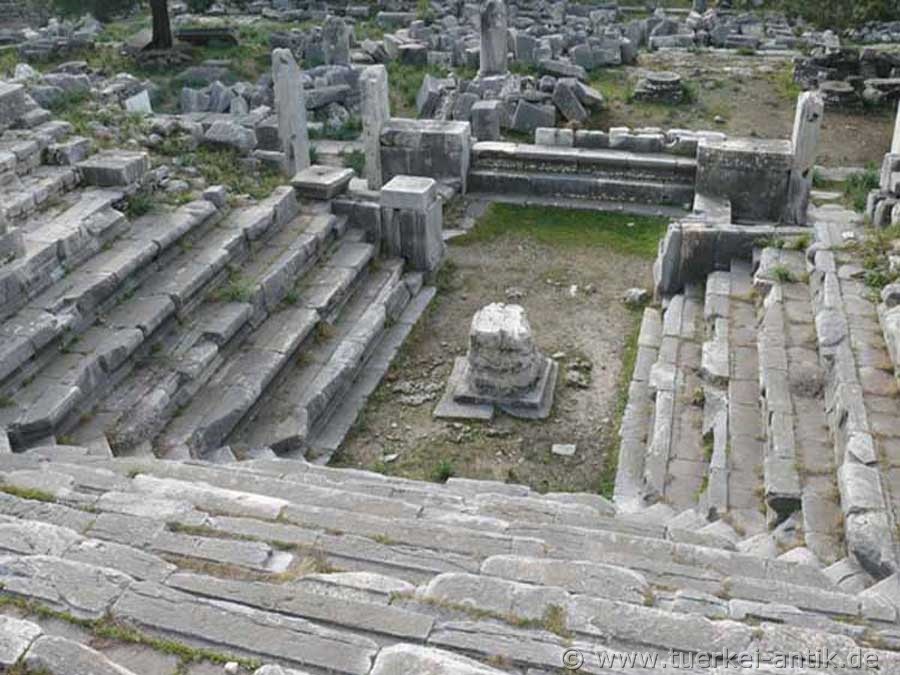 |
| Priene in Caria | |||
|
|
|
||
| The most famous photo motif of Priene, the 5 erected columns of the temple of Athena | |||
|
The origins of the city of Priene lie in the darkness of history. The city was newly founded elsewhere around the middle of the 4th century B.C.. This measure could have been initiated by the Carian ruler Maussollos or the Athenians. The exact location of the first settlement of the people of Prien is not known. However, the eventful history of this settlement is well known. |
|||
|
|
|||
| At the Agora with the Holy Hall | |||
|
The Agora, the public market and meeting place, was about in the middle of the city. It took the width of two insulae of the city grid in an east-west direction and one and a half insulae in a north-south direction; it measured 82 × 88 m. The southern part of the square was surrounded on three sides by a surrounding portico of Doric order; the northern edge beyond the main street was first formed by a similar portico.
|
|||
|
|
|||
| The Sanctuary of Asclepius | |||
|
To the east of the Agora lies the sanctuary of Asclepius, whose entrance was not on the Agora but on the eastern side of the sanctuary facing away from it. |
|||
|
|
|||
| The Theatre | |||
|
|
|||
|
Chair for dignitaries and guests of honour |
|||
|
|
|||
|
Of the more than twenty theatres of Western Asia Minor, some of which are very well preserved, only this has retained its Hellenistic form. All others were rebuilt in Roman times. A special feature are the five marble armchairs around the orchestra, which were intended for dignitaries and guests of honour.
|
|||
|
|
|||
|
|
|||
| The ruins of the temple of Athena | |||
|
|
|||
|
The temple of Athena is one of the relatively few buildings of Greek antiquity whose architect has been passed down by name. After Vitruv, it was designed by Pytheos, who also worked at the mausoleum of Halicarnassus (now Bodrum). Vitruv praised the work at the temple of Athena as excellent. The study of architectural ornamentation documented several construction phases, from the beginning in the second half of the 4th century B.C. to completion in the earliest Roman imperial period, presumably under Augustus. By mentioning it at Vitruv, great importance was attached to the temple of Athena. |
|||
|
|
|||
|
|
|||
|
Column drums of the temple of Athena |
|||
|
|
|||
 |
|||
|
The Bouleuterion |
|||
|
With the victory of the Romans under Gnaeus Manlius Vulso over the Seleucids in 190 B.C., Priene first came under the control of Rome as an independent ally. Around 140/130 B.C. a fire disaster destroyed the districts to the west.
|
|||
| Photos: @chim | |||
| Translation aid: www.DeepL.com/Translator | |||
| Source: Wikipedia and others | |||
|
|
|||

